Active Directory Federation Services (ADFS)
Use ADFS as SAML identity provider for Kimai
Go back to general SAML configuration for Kimai.
SAML authentication with Microsoft ADFS has proven to work with the following configuration.
Setup the Kimai Config first and reload cache, once SAML is enabled the metadata.xml that’s autogenerated is used to configure the ADFS side.
Configure local.yaml
kimai:
saml:
provider: microsoft
activate: true
title: Login with ADFS
mapping:
- { saml: $http://schemas.xmlsoap.org/ws/2005/05/identity/claims/emailaddress, kimai: email }
- { saml: $http://schemas.xmlsoap.org/ws/2005/05/identity/claims/emailaddress, kimai: username }
- { saml: $http://schemas.xmlsoap.org/ws/2005/05/identity/claims/givenname $http://schemas.xmlsoap.org/ws/2005/05/identity/claims/surname, kimai: alias }
- { saml: $http://schemas.xmlsoap.org/ws/2005/05/identity/claims/name, kimai: title }
roles:
resetOnLogin: true
attribute: $http://schemas.xmlsoap.org/claims/Group
mapping:
# Insert your role-mapping here (ROLE_USER is added automatically)
- { saml: Admin, kimai: ROLE_SUPER_ADMIN }
- { saml: Manager, kimai: ROLE_ADMIN }
- { saml: Teamlead, kimai: ROLE_TEAMLEAD }
connection:
idp:
entityId: 'https://adfs.com/adfs/services/trust'
singleSignOnService:
# binding: 'urn:oasis:names:tc:SAML:2.0:bindings:HTTP-Redirect'
url: 'https://adfs.com/adfs/ls/'
singleLogoutService:
url: 'https://adfs.com/adfs/ls/?wa=wsignout1.0'
# binding: 'urn:oasis:names:tc:SAML:2.0:bindings:HTTP-Redirect'
x509cert: 'CERT'
# Your Kimai: replace https://www.example.com with your base URL
sp:
entityId: 'https://timetracking.example.com/auth/saml/metadata'
assertionConsumerService:
url: 'https://timetracking.example.com/auth/saml/acs'
# binding: 'urn:oasis:names:tc:SAML:2.0:bindings:HTTP-POST'
singleLogoutService:
url: 'https://timetracking.example.com/auth/saml/logout'
# binding: 'urn:oasis:names:tc:SAML:2.0:bindings:HTTP-Redirect'
privateKey: ''
# only set baseurl, if auto-detection doesn't work
baseurl: 'https://timetracking.example.com/auth/saml/'
strict: false
debug: true
security:
nameIdEncrypted: true
authnRequestsSigned: false
logoutRequestSigned: false
logoutResponseSigned: false
wantMessagesSigned: false
wantAssertionsSigned: false
wantNameIdEncrypted: false
requestedAuthnContext: true
signMetadata: false
wantXMLValidation: true
#signatureAlgorithm: 'http://www.w3.org/2001/04/xmldsig-more#rsa-sha256'
#digestAlgorithm: 'http://www.w3.org/2001/04/xmlenc#sha256'
#ADFS URL-Encodes SAML data as lowercase, and the toolkit by default uses
#uppercase. Turn it True for ADFS compatibility on signature verification
#https://github.com/SAML-Toolkits/php-saml#how-it-works
lowercaseUrlencoding: true
contactPerson:
technical:
givenName: 'Name'
emailAddress: 'support@example.com'
organization:
en:
name: 'Company'
displayname: 'Name'
url: 'https://example.com'
ADFS Setup
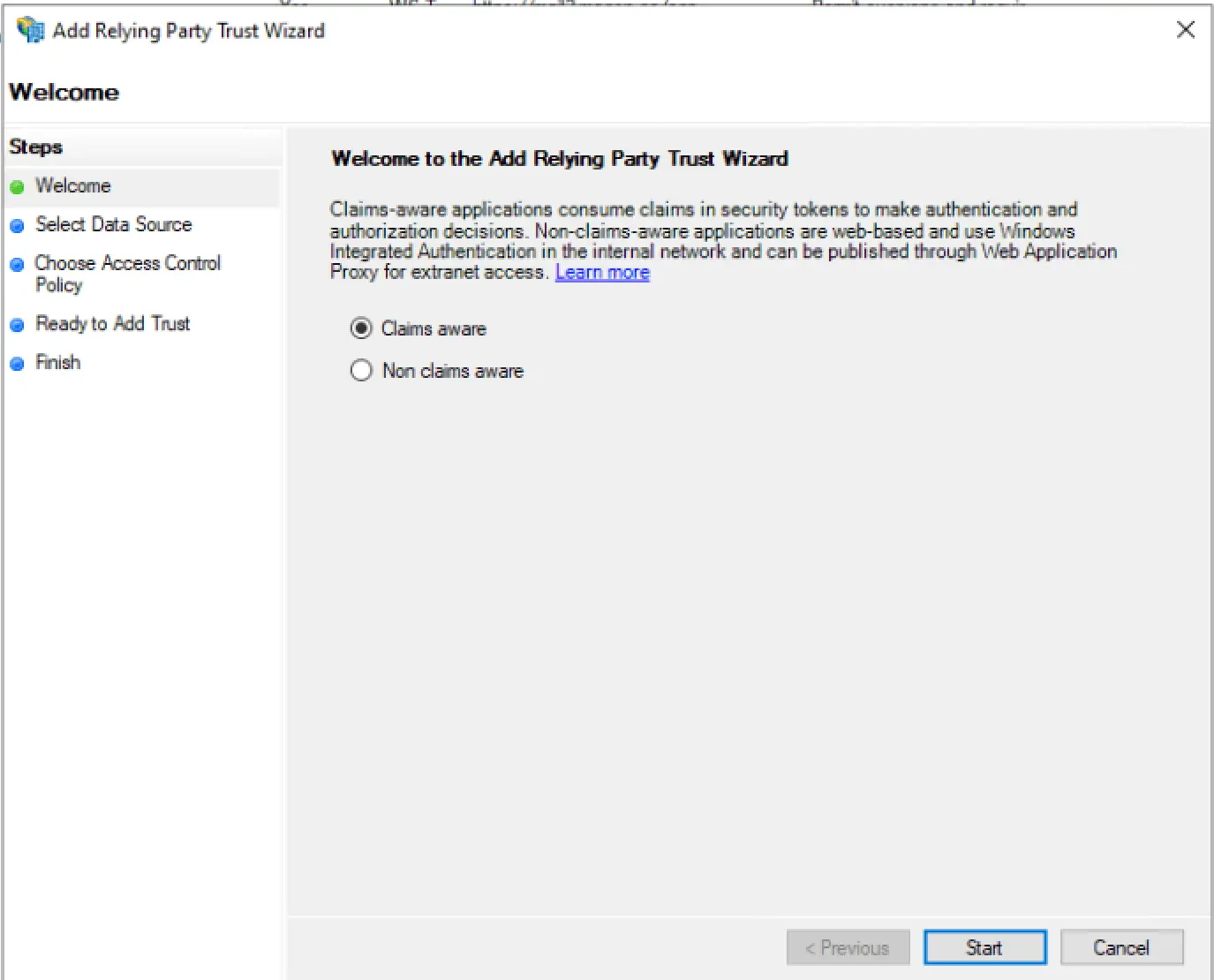
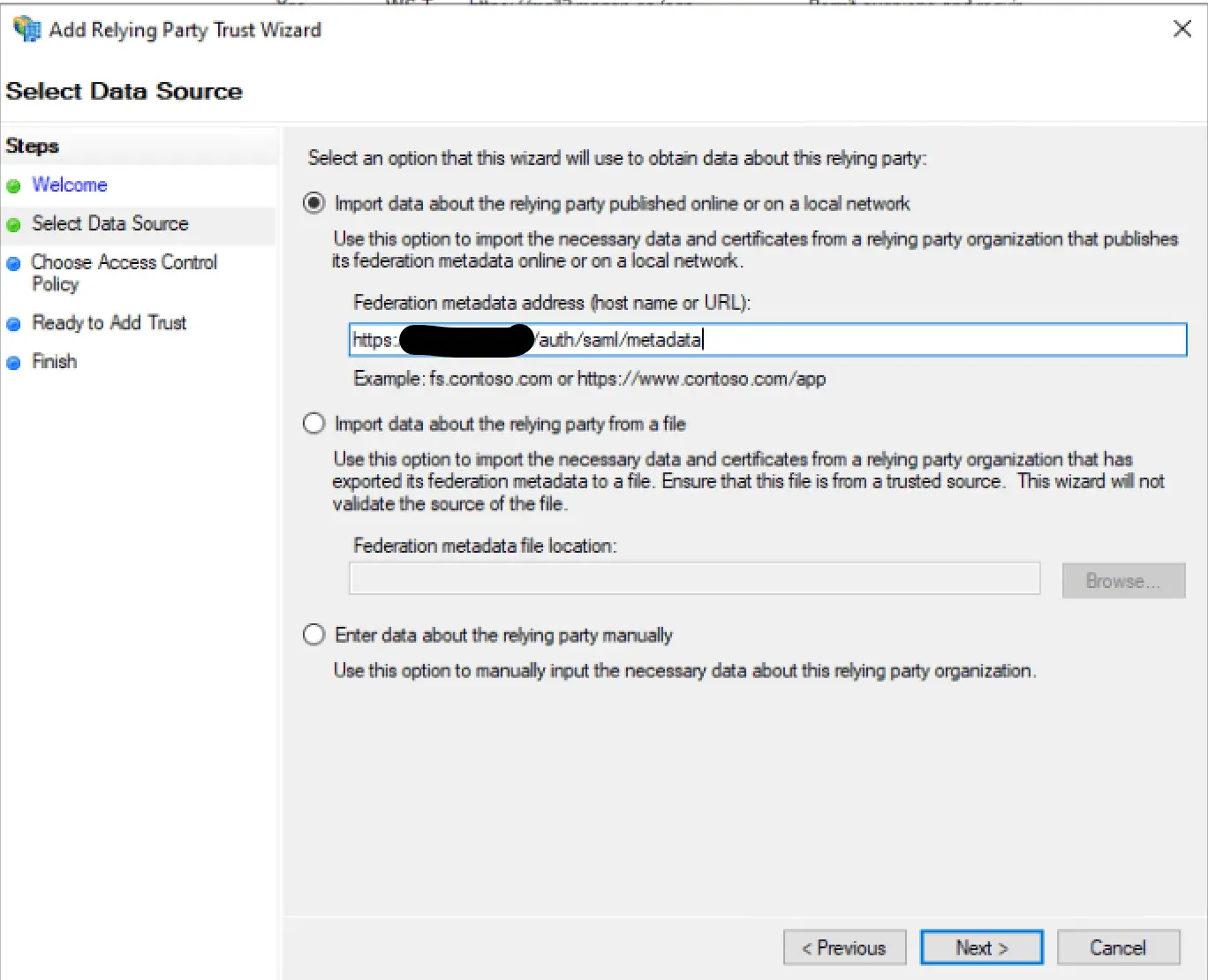
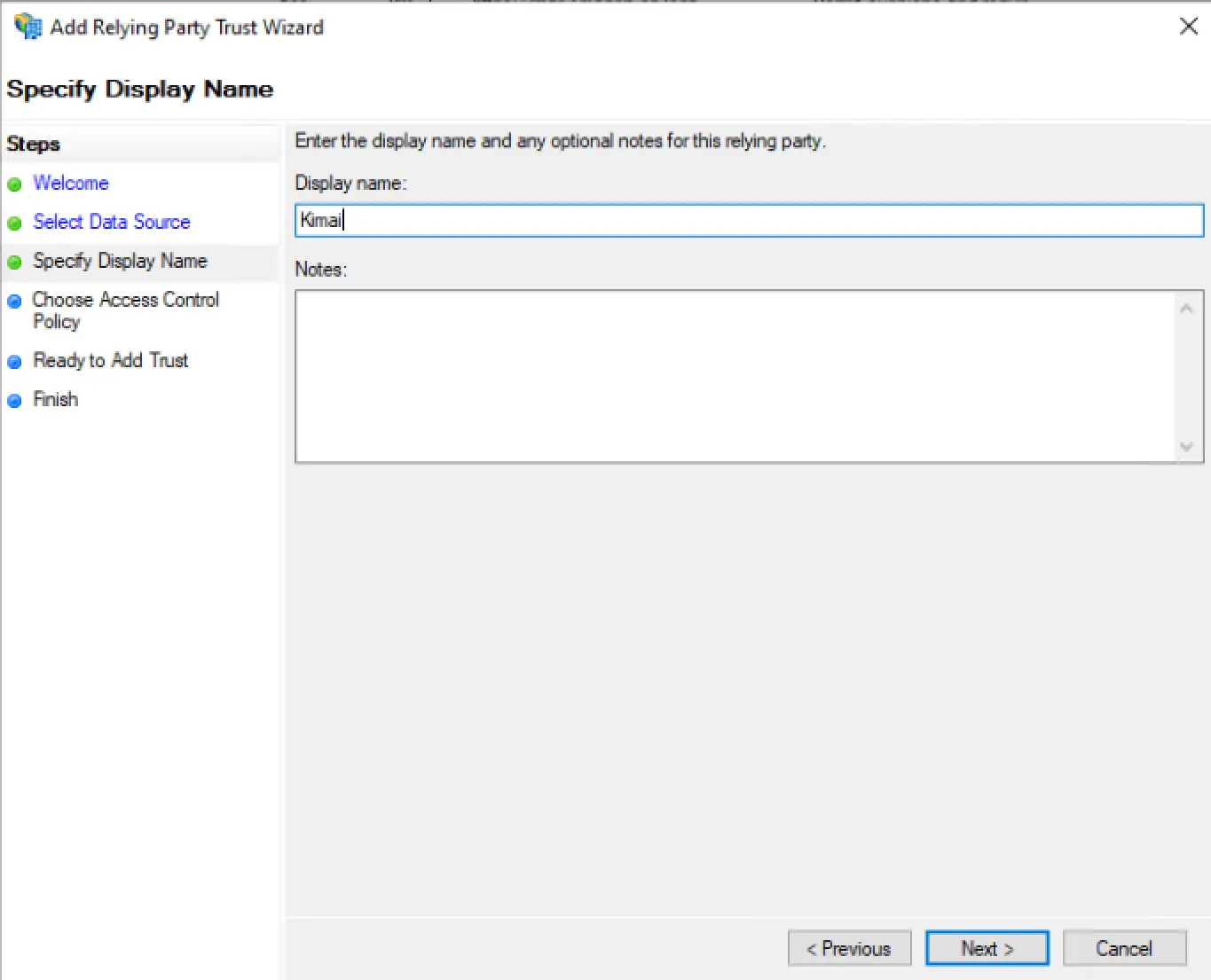
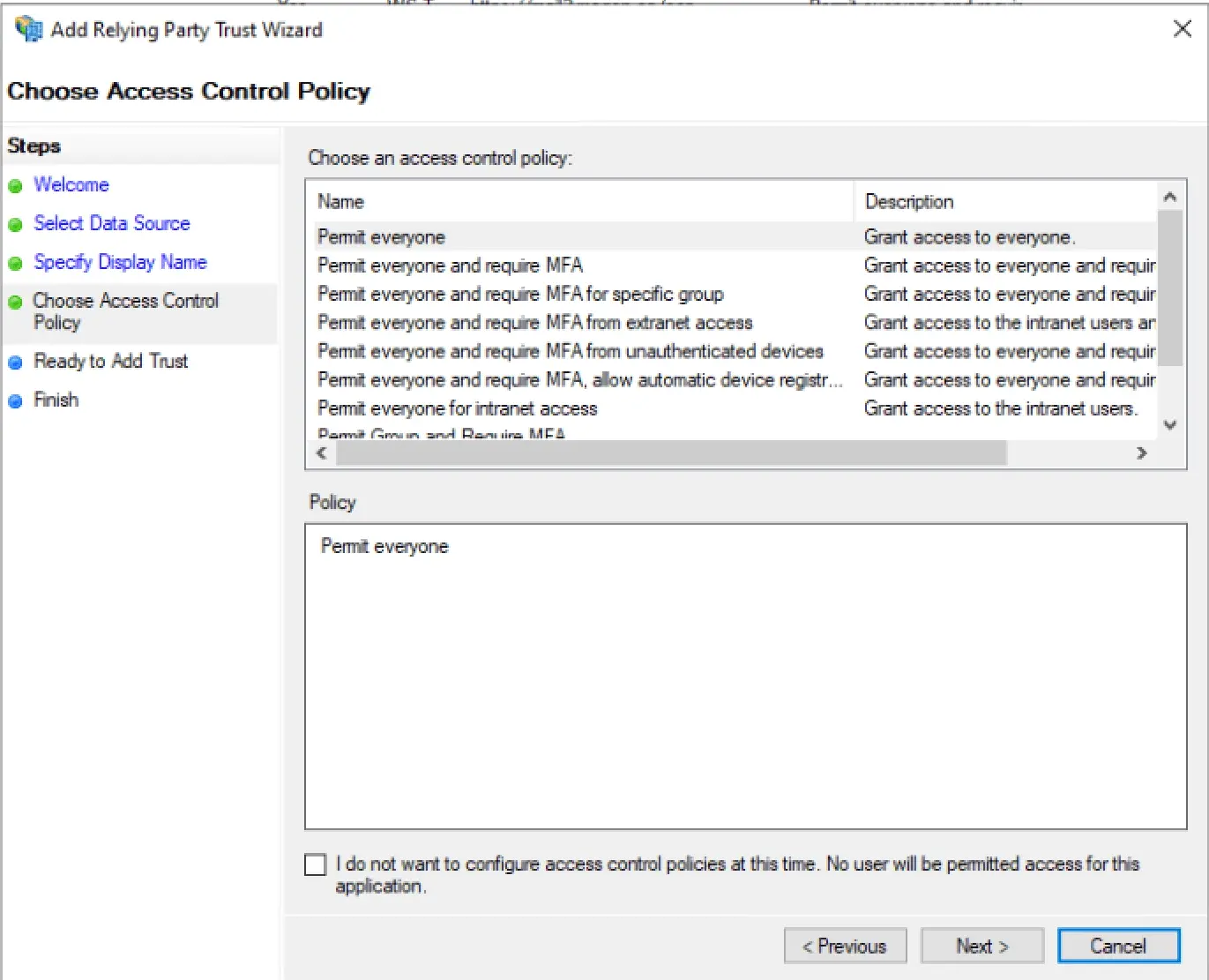


Rule Template for Attributes
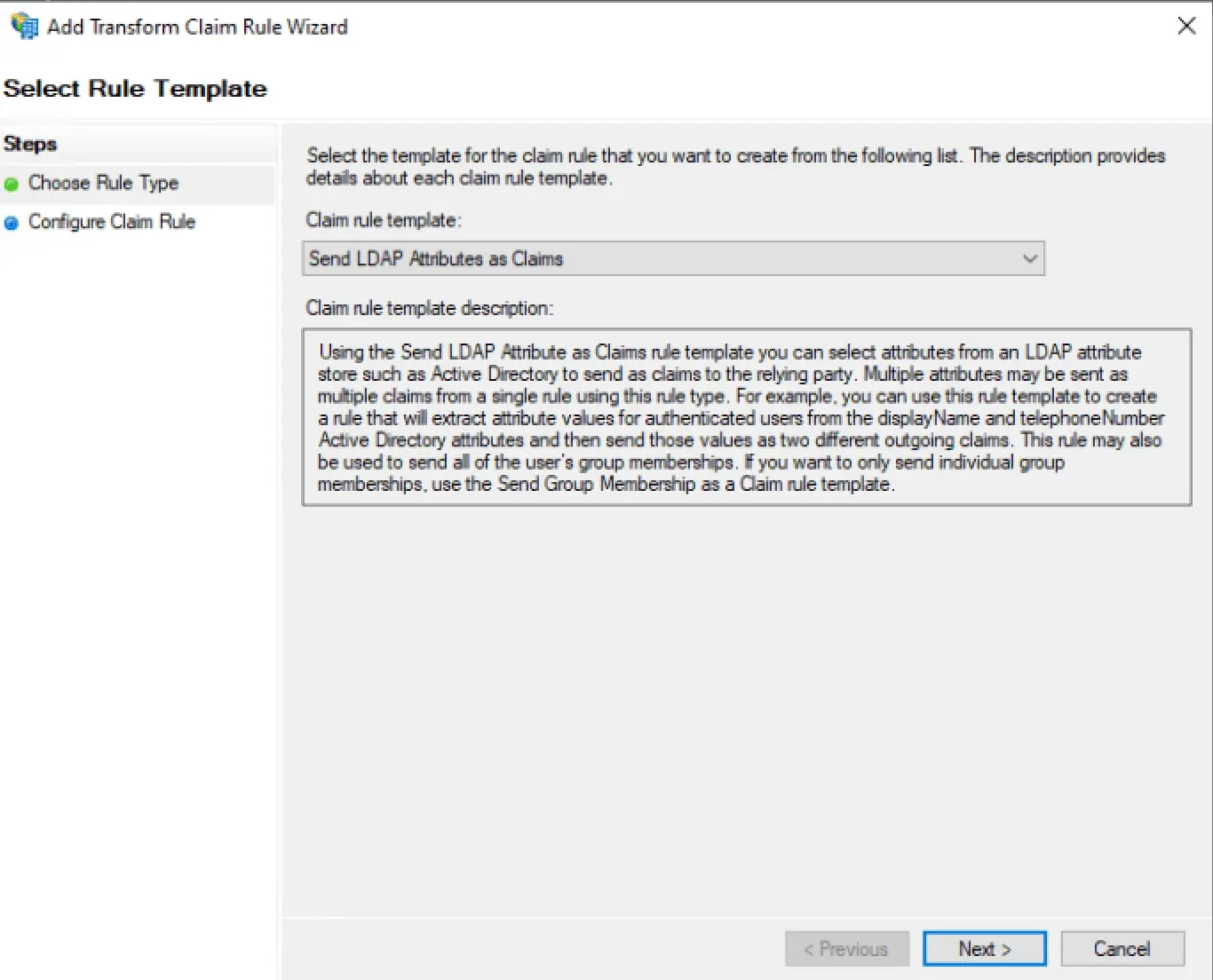
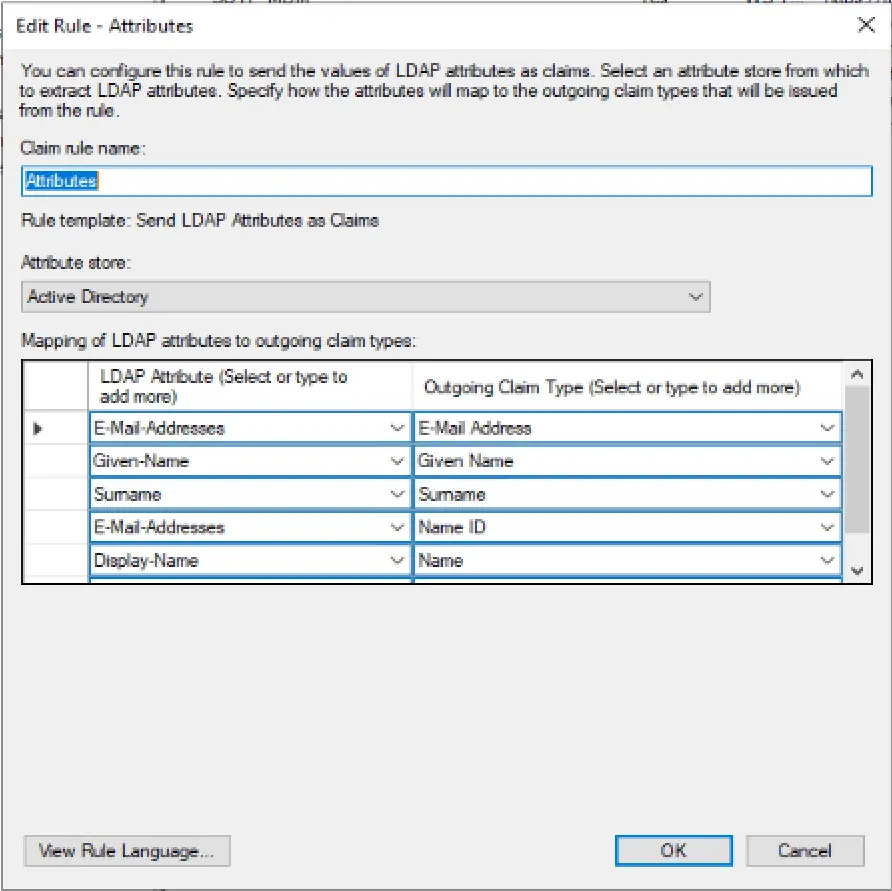
Rule Template for Groups
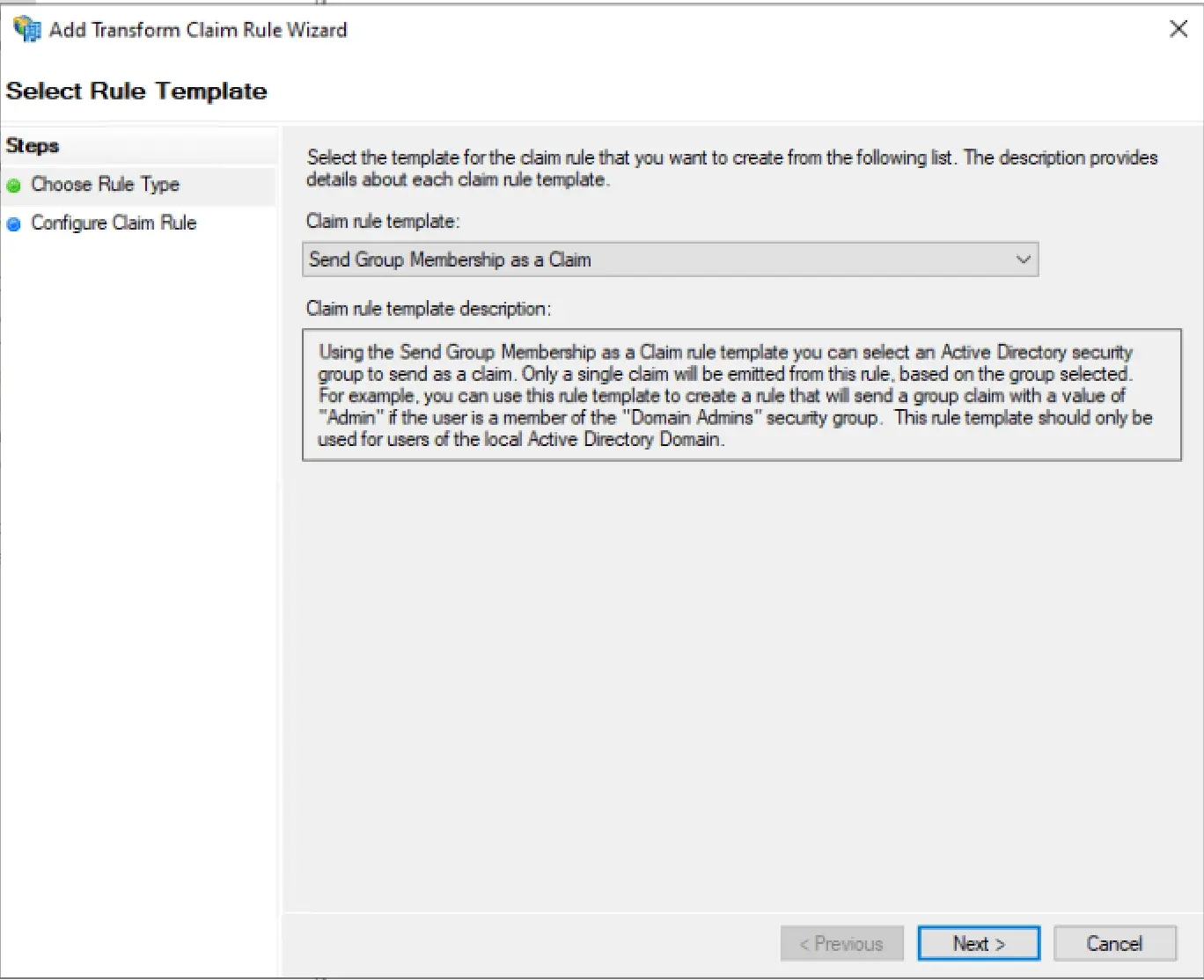
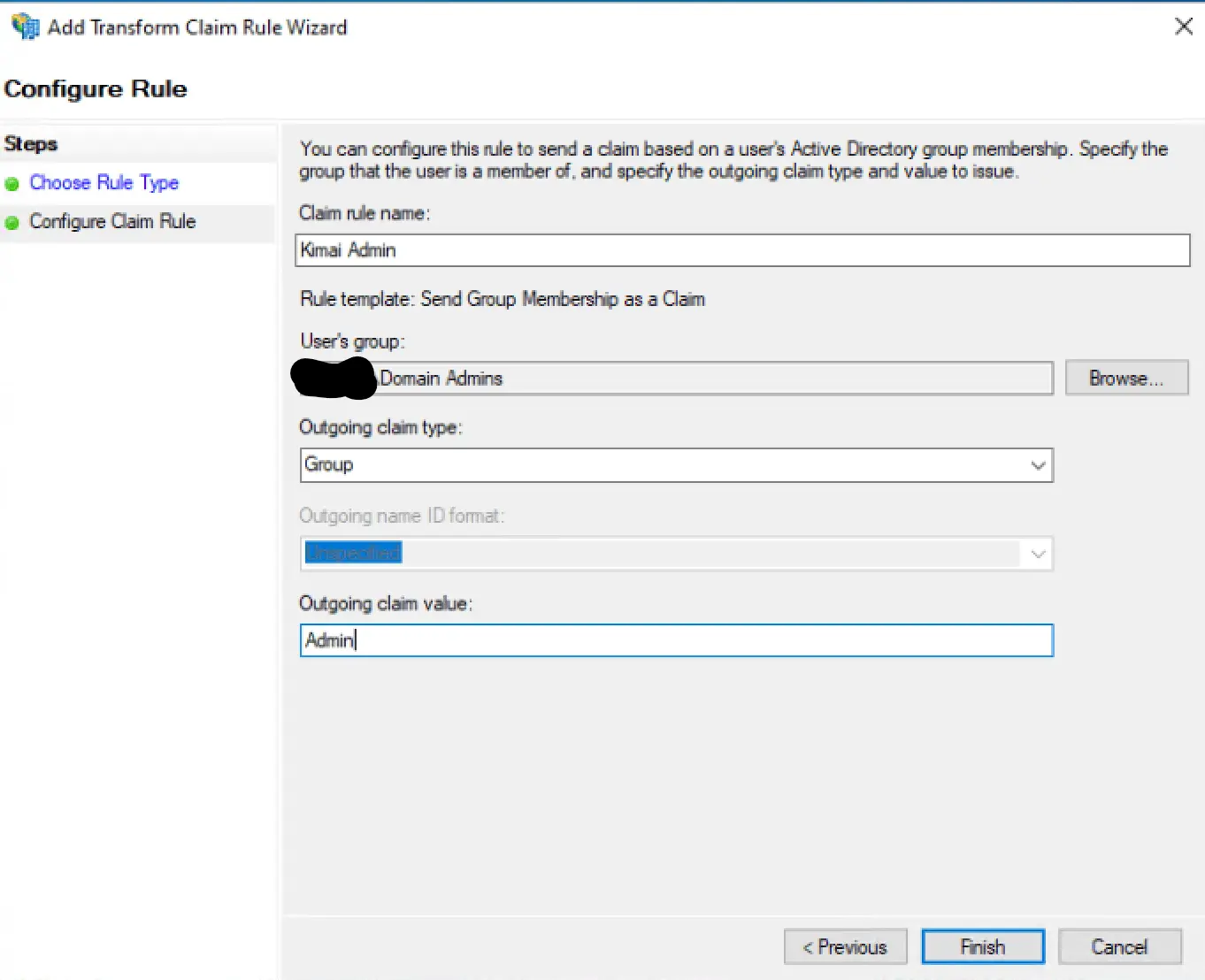
Apply Claim Issuance Policy
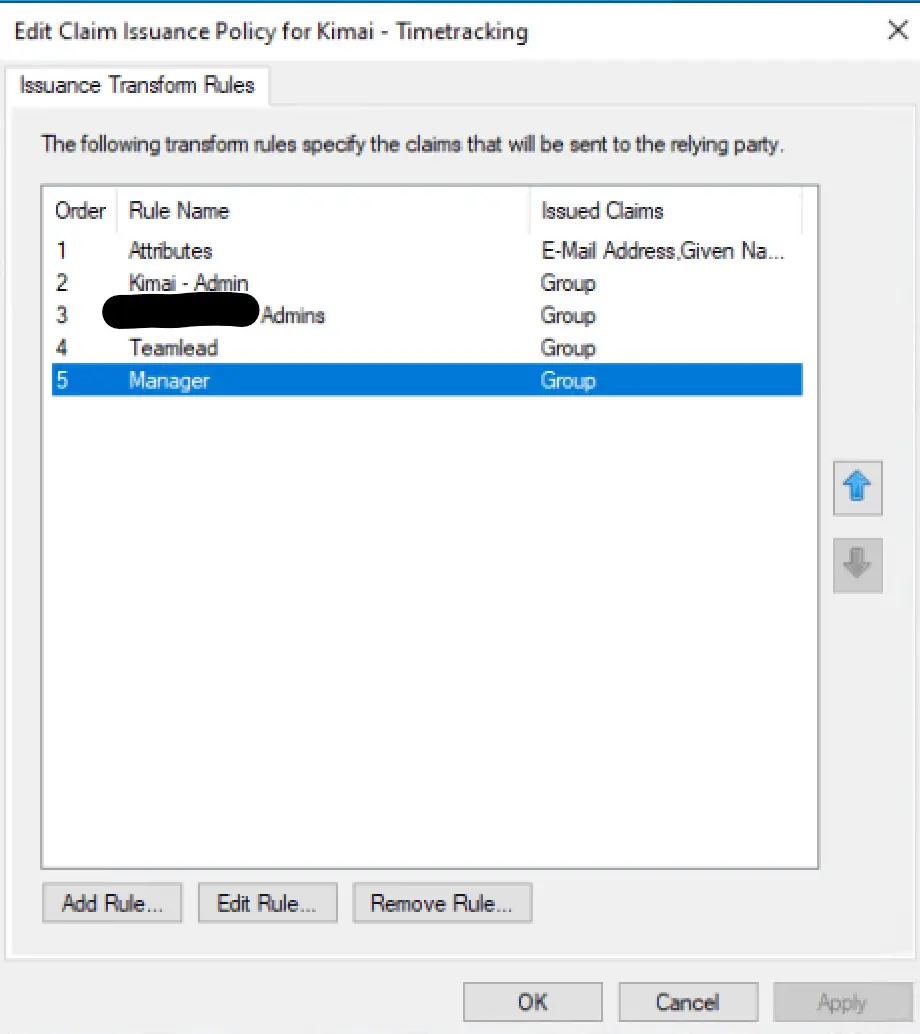
Test
You should now be able to test the Login by visiting https://timetracking.example.com/ and clicking on the Login With ADFS title of the SAML method, you defined earlier.